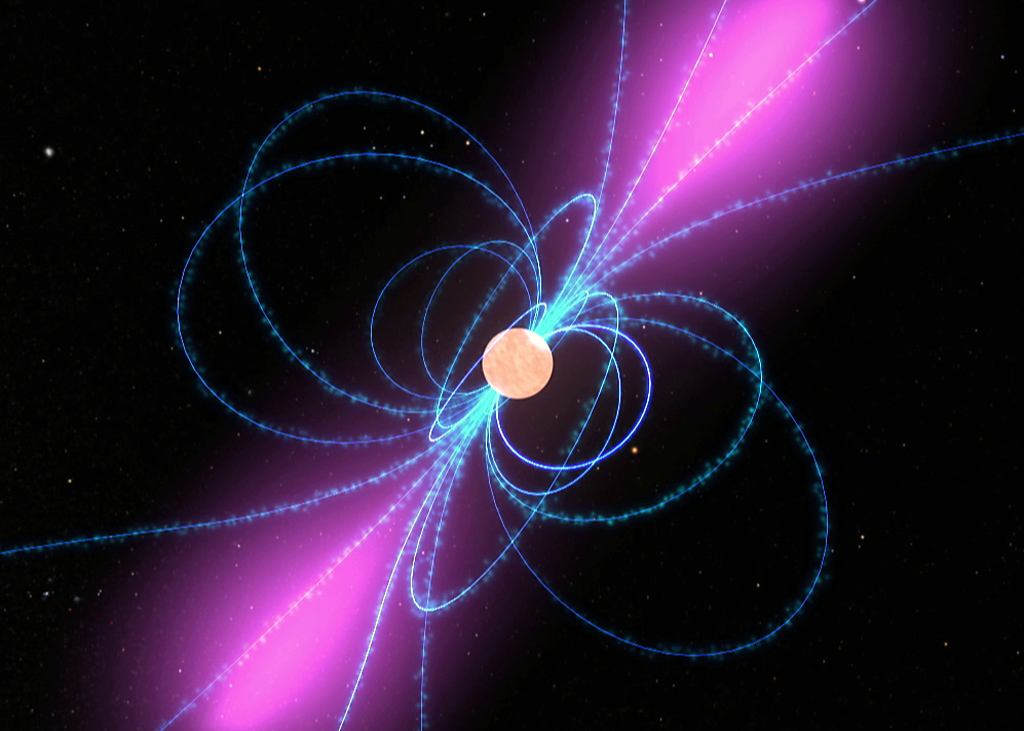Clouds of charged particles move along the pulsar's magnetic field lines (blue) and create a lighthouse-like beam of gamma rays (purple) in this illustration. Credit: NASA
Today at the 2009 Fermi Symposium in Washington DC, postdoctoral researcher Lucas Guillemot of the Max Planck Institute reported that the Fermi Gamma-ray Space Telescope has detected eight more pulsars that had not been seen in other wavelengths of light, bringing the total of these gamma-ray-only objects to 24. It also bagged one new gamma ray millisecond pulsar. However, Guillemot said these results are preliminary and have not been submitted for publication yet.
Pulsars are the remnants of supernovas -- stars that run out of fuel, expand and then collapse into masses heavier than the sun but with an average radius of only 10 km. Pulsars emit powerful jets of radiation, and as they rotate the radiation sweeps across the cosmos like the beam from a light house. From Earth, it looks as though the neutron star's light is pulsing on and off.
The vast majority of pulsars emit radio waves; that's how most of them were detected. But in blind searches of the sky, Fermi has found previously unknown pulsars that appear to radiate only gamma rays. It may be that these pulsars emit in radio wavelengths, too, but their radio beams are simply not visible from Earth; follow-up observations should reveal if they radiate in other frequencies, including radio.
Fermi's discovery of a new gamma ray millisecond pulsar, or MSP, brings the telescope's tally up to nine. The pulse of light from an MSP has a period of milliseconds, meaning the neutron star is rotating hundreds of times per second and appears to blink rapidly. The gamma ray MSPs studied by Fermi had already been identified by radio telescopes; Fermi was the first gamma ray telescope to identify MSPs that radiate gamma rays.
Including these nine new pulsars, Fermi has identified 55 pulsars that radiate in the gamma range, in just one year of data collection. This can be compared to the 5 new pulsars discovered over nine years by Fermi's predecessor EGRET (Energetic Gamma Ray Experiment Telescope). Guillemot said in an interview after his presentation that the great benefit of finding so many pulsars is being able to look for trends and similar characteristics among them.
"If you have less than ten detected pulsars, they're all black sheep, they're all different from each other," he said. "When you have lots, you can start to categorize them and draw trends; and that is how you understand how things work."
Fermi has posted a "catalogue" of its confirmed identified pulsars on the arXiv: 16 gamma-ray-only pulsars (not including the 8 new ones), 22 radio loud pulsars (already identified by radio telescopes), and 8 gamma ray MSPs (not including the newest one).







